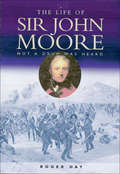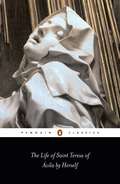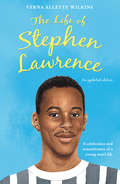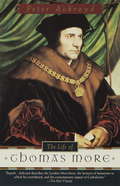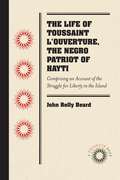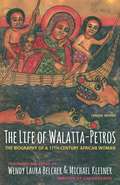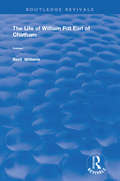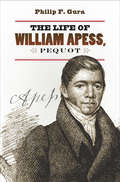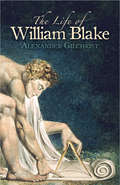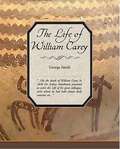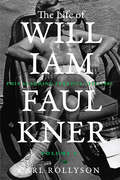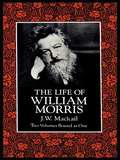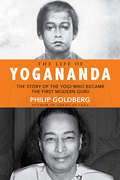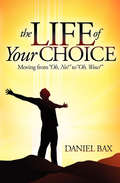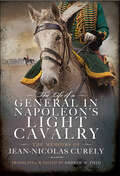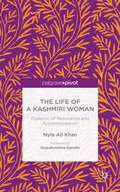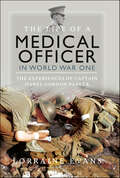- Table View
- List View
The Life of Sir Hersch Lauterpacht
by Elihu LauterpachtHersch Lauterpacht, of whom this book is an intimate biography by his son, Elihu, was one of the most prolific and influential international lawyers of the first half of the twentieth century. Having come to England from Austria in the early 1920s, he first researched and taught at the London School of Economics before moving to Cambridge in 1937 to become Whewell Professor of International Law. He did valuable work to enhance relations with the United States during the Second World War, and was active after the war in the prosecution of William Joyce and the major Nazi war criminals. For ten years he was also involved in various significant items of professional work and in 1955 he was elected a judge of the International Court of Justice. The book contains many extracts from his correspondence, the interest of which will extend to lawyers, historians of the period and beyond.
The Life of Sir John Moore: Not a Drum Was Heard (Military History Ser.)
by Roger DaySir John Moore organized and trained the British light infantry during the Napoleonic wars, and thus is regarded as the father of all subseqent British special warfare units. This biography is the first to draw on papers in the archives of the Dukes of Hamilton and Argyll which shed new light on Moore's upbringing and the shaping of his revolutionary approach to the art and science of warfare.
The Life of St Teresa of Avila by Herself
by Teresa of AvilaBorn in the Castilian town of Ávila in 1515, Teresa entered the Carmelite convent of the Incarnation when she was twenty-one. Tormented by illness, doubts and self-recrimination, she gradually came to recognize the power of prayer and contemplation - her spiritual enlightenment was intensified by many visions and mystical experiences, including the piercing of her heart by a spear of divine love. She went on to found seventeen Carmelite monasteries throughout Spain. Teresa always denied her own saintliness, however, saying in a letter: 'There is no suggestion of that nonsense about my supposed sanctity.' This frank account is one of the great stories of a religious life and a literary masterpiece - after Don Quixote, it is Spain's most widely read prose classic.
The Life of St. Catherine of Siena
by Blessed Raymond of CapuaFrom the book: "One day, while the virgin was praying in her little room, the Lord and Saviour of the human race appeared to her and announced what was to happen in these words. 'Know, sweetest daughter,' He said, 'that in the time to come your earthly pilgrimage will be distinguished by such marvellous new gifts from me that the hearts of ignorant carnal men will be amazed and incredulous. . . . But you must not be anxious or afraid, for I shall be always with you, and I shall free your soul from the evil tongues and the lips that utter lies. Carry out undauntedly whatever the Spirit prompts you to do, for through you I shall snatch many souls from the jaws of hell and by my grace transport them to the kingdom of heaven.'"
The Life of Stephen F. Austin, Founder of Texas, 1793–1836: A Chapter in the Westward Movement of the Anglo-American People (Texas History Paperbacks Series)
by Eugene C. BarkerThe definitive biography of the legendary Empresario who colonized Texas for the Mexican government before leading the Texas Revolution. First published in 1925, The Life of Stephen F. Austin remains one of the finest works of Texas biography. An historian at the University of Texas, Eugene C. Barker spent nearly twenty-five years researching and writing this magisterial narrative, combining impeccable academic standards with engaging and lively prose. The son of Moses Austin, who received an empresario grant from Spain to settle Texas, Stephen took the mantle and began settling the region for the newly independent state of Mexico. He sold parcels of land to families of Anglo-Americans who later became known as the Old Three Hundred. When this growing Anglo community rebelled against the Mexican government, Austin led volunteer forces to victory at the Siege of Bexar and later served as Secretary of State for the Republic of Texas under President Houston.
The Life of Stephen F. Austin, Founder of Texas, 1793–1836: A Chapter in the Westward Movement of the Anglo-American People (Texas History Paperbacks Series)
by Eugene C. BarkerAlmost a hundred years after the death of Stephen F. Austin this first full-length biography was published. And for almost a quarter of a century—dividing his time between editing, teaching, textbook writing, and serving in various academic capacities—Eugene C. Barker pursued the study which resulted in The Life of Stephen F. Austin. His accomplishment has long been regarded as a fine example of biography in Texas literature.
The Life of Stephen Lawrence
by Verna Allette WilkinsStephen Lawrence was a bright, athletic, young man with high hopes for the future. He lived in south-east London with his parents, younger brother and younger sister. On 22 April 1993, he was brutally murdered while he was waiting for the bus. He was eighteen years old. He didn't know his killers; his killers didn't know him.This is his story. He will be remembered.This paperback edition revised with added material about the trial, the legacy of Stephen Lawrence and a final note from Doreen Lawrence.
The Life of Thomas E. Scrutton
by David FoxtonKarl Llewellyn described Thomas Scrutton as 'the greatest English-speaking commercial judge of a century'. Scrutton played a key role in a number of politically sensitive court cases from the Great War to the 1930s. This biography draws on unpublished sources to evaluate his contribution as counsel, campaigner and judge in a number of areas: the development of a modern law of copyright; the checking of executive power in and after the Great War; and his attempt to develop English commercial law on a basis which reflected the practices and expectations of the commercial community. In addition to providing valuable insights into the nature of legal practice and advancement in the Victorian and Edwardian eras, the book examines Llewellyn's claim that Scrutton adopted a 'realist' approach to the development of commercial law, and uses the body of Scrutton's judgments to explore the limits of a 'realist' approach to jurisprudence.
The Life of Thomas More
by Peter AckroydPeter Ackroyd's The Life of Thomas More is a masterful reconstruction of the life and imagination of one of the most remarkable figures of history. Thomas More (1478-1535) was a renowned statesman; the author of a political fantasy that gave a name to a literary genre and a worldview (Utopia); and, most famously, a Catholic martyr and saint.Born into the professional classes, Thomas More applied his formidable intellect and well-placed connections to become the most powerful man in England, second only to the king. As much a work of history as a biography, The Life of Thomas More gives an unmatched portrait of the everyday, religious, and intellectual life of the early sixteenth century. In Ackroyd's hands, this renowned "man for all seasons" emerges in the fullness of his complex humanity; we see the unexpected side of his character--such as his preference for bawdy humor--as well as his indisputable moral courage.
The Life of Toussaint L'Ouverture, the Negro Patriot of Hayti
by John Relly BeardToussaint L'Ouverture (1743-1803) won international renown in the Haitian fight for independence. He led thousands of former slaves into battle against French, Spanish, and English forces, routing the Europeans and seizing control of the entire island of Hispaniola. L'Ouverture became governor and commander-in-chief of Haiti before officially acknowledging French rule in 1801, when he submitted a newly written constitution to Napoleon Bonaparte (1769-1821) and the French legislature for ratification. In response, Bonaparte sent an army to depose L'Ouverture, who was taken prisoner in June of 1802 and shipped to France, where he died of pneumonia in April 1803. The Life of Toussaint L'Ouverture (1853) was first published in London on the fiftieth anniversary of L'Ouverture's death and remained the authoritative English-language history of L'Ouverture's life until the late twentieth century. Throughout the text, John Relly Beard compares L'Ouverture to famously successful white generals, argues for his supremacy, and states that his ultimate failure to liberate Haiti and untimely death are the products of unfortunate circumstances--not an indictment of his character or leadership abilities.A DOCSOUTH BOOK. This collaboration between UNC Press and the University of North Carolina at Chapel Hill Library brings selected classic works from the digital library of Documenting the American South back into print. DocSouth Books uses the latest digital technologies to make these works available as downloadable e-books or print-on-demand publications. DocSouth Books are unaltered from the original publication, providing affordable and easily accessible editions to a new generation of scholars, students, and general readers.
The Life of Walatta-Petros: A Seventeenth-Century Biography of an African Woman, Concise Edition
by Wendy Laura Belcher Galawdewos Michael KleinerTranslated into English for the first time, The Life of Walatta-Petros (1672) tells the story of an Ethiopian saint who lived from 1592 to 1642 and led a successful nonviolent movement to preserve African Christian beliefs in the face of European protocolonialism. This is the oldest-known book-length biography of an African woman written by Africans before the nineteenth century, and one of the earliest stories of African resistance to European influence. Written by her disciples after her death, The Life of Walatta-Petros praises her as a friend of women, a devoted reader, a skilled preacher, and a radical leader, providing a rare picture of the experiences and thoughts of Africans—especially women—before the modern era. In addition to an authoritative and highly readable translation, this edition, which omits the notes and scholarly apparatus of the hardcover, features a new introduction aimed at students and general readers.
The Life of Wiliam Pitt Earl of Chatham: Volume 1 (Routledge Revivals)
by Basil WilliamsPublished in 1966: The object of this book is to give a picture of Pitt, true to life and ‘captivating the people,’ whom he served and loved. He has sometimes suffered in history because the people who appreciated him at his highest were inarticulate and have left the field to the surmises of courtiers, Whig magnates and gossips, whom he sought not to please.
The Life of William Apess, Pequot (H. Eugene and Lillian Youngs Lehman Series)
by Philip F. GuraThe Pequot Indian intellectual, author, and itinerant preacher William Apess (1798-1839) was one the most important voices of the nineteenth century. Here, Philip F. Gura offers the first book-length chronicle of Apess's fascinating and consequential life. After an impoverished childhood marked by abuse, Apess soldiered with American troops during the War of 1812, converted to Methodism, and rose to fame as a lecturer who lifted a powerful voice of protest against the plight of Native Americans in New England and beyond. His 1829 autobiography, A Son of the Forest, stands as the first published by a Native American writer. Placing Apess's activism on behalf of Native American people in the context of the era's rising tide of abolitionism, Gura argues that this founding figure of Native intellectual history deserves greater recognition in the pantheon of antebellum reformers. Following Apess from his early life through the development of his political radicalism to his tragic early death and enduring legacy, this much-needed biography showcases the accomplishments of an extraordinary Native American.
The Life of William Blake
by Alexander GilchristOne of the greatest Victorian-era biographies, Alexander Gilchrist's The Life of William Blake plays a key role in the history of Blake's work and its influence on other writers and artists. The first standard text on Blake and a cornerstone of the extensive scholarship on his life and work, it not only delivered its subject from unjust obscurity but also dispelled the notion of Blake's insanity and established his genius as a visionary artist and poet.Sensitive, highly readable accounts trace Blake's childhood and years as an engraver's apprentice, his relations with patrons and employers, his trial for treason, and his declining health and untimely death. The author's wide-ranging research includes interviews with many of Blake's surviving friends, whose personal recollections add warmth and immediacy to this portrait. Extensive quotes from the subject's poetry and prose — practically unknown at the time of the original 1863 publication — further enliven the text. In addition to a critical commentary on Blake's boyhood poems, this transformative biography features more than 40 of his illustrations.
The Life of William Carey, Shoemaker & Missionary
by George Smith. . . On the death of William Carey In 1834 Dr. Joshua Marshman promised to write the Life of his great colleague, with whom he had held almost daily converse since the beginning of the century, but he survived too short a time to begin the work. In 1836 the Rev. Eustace Carey anticipated him by issuing what is little better than a selection of mutilated letters and journals made at the request of the Committee of the Baptist Missionary Society. It contains one passage of value, however. Dr. Carey once said to his nephew, whose design he seems to have suspected, "Eustace, if after my removal any one should think it worth his while to write my Life, I will give you a criterion by which you may judge of its correctness. If he give me credit for being a plodder he will describe me justly. Anything beyond this will be too much. I can plod. I can persevere in any definite pursuit. To this I owe everything. . .
The Life of William Faulkner: This Alarming Paradox, 1935–1962
by Carl RollysonBy the end of volume 1 of The Life of William Faulkner ("A filling, satisfying feast for Faulkner aficianados"— Kirkus), the young Faulkner had gone from an unpromising, self-mythologizing bohemian to the author of some of the most innovative and enduring literature of the century, including The Sound and the Fury and Light in August. The second and concluding volume of Carl Rollyson’s ambitious biography finds Faulkner lamenting the many threats to his creative existence. Feeling, as an artist, he should be above worldly concerns and even morality, he has instead inherited only debts—a symptom of the South’s faded fortunes—and numerous mouths to feed and funerals to fund. And so he turns to the classic temptation for financially struggling writers—Hollywood. Thus begins roughly a decade of shuttling between his home and family in Mississippi—lifeblood of his art—and the backlots of the Golden Age film industry. Through Faulkner’s Hollywood years, Rollyson introduces such personalities as Humphrey Bogart and Faulkner’s long-time collaborator Howard Hawks, while telling the stories behind films such as The Big Sleep and To Have and Have Not. At the same time, he chronicles with great insight Faulkner's rapidly crumbling though somehow resilient marriage and his numerous extramarital affairs--including his deeply felt, if ultimately doomed, relationship with Meta Carpenter. (In his grief over their breakup, Faulkner—a dipsomaniac capable of ferocious alcoholic binges—received third-degree burns when he passed out on a hotel-room radiator.) Where most biographers and critics dismiss Faulkner’s film work as at best a necessary evil, at worst a tragic waste of his peak creative years, Rollyson approaches this period as a valuable window on his artistry. He reveals a fascinating, previously unappreciated cross-pollination between Faulkner’s film and literary work, elements from his fiction appearing in his screenplays and his film collaborations influencing his later novels—fundamentally changing the character of late-career works such as the Snopes trilogy. Rollyson takes the reader on a fascinating journey through the composition of Absalom, Absalom!, widely considered Faulkner’s masterpiece, as well as the film adaptation he authored—unproduced and never published— Revolt in the Earth. He reveals how Faulkner wrestled with the legacy of the South—both its history and its dizzying racial contradictions—and turned it into powerful art in works such as Go Down, Moses and Intruder in the Dust. Volume 2 of this monumental work rests on an unprecedented trove of research, giving us the most penetrating and comprehensive life of Faulkner and providing a fascinating look at the author's trajectory from under-appreciated "writer's writer" to world-renowned Nobel laureate and literary icon. In his famous Nobel speech, Faulkner said what inspired him was the human ability to prevail. In the end, this beautifully wrought life shows how Faulkner, the man and the artist, embodies this remarkable capacity to endure and prevail.
The Life of William Morris
by J. W. MackailClassic biography of the great Victorian poet, designer and socialist. Published a few years after Morris’ death, it chronicles his childhood, days at Oxford, forays into art and literature, embrace of socialism, involvement with the Arts and Crafts movement, founding of the Kelmscott Press, much more. 22 black-and-white illustrations.
The Life of Yogananda: The Story of the Yogi Who Became the First Modern Guru
by Philip GoldbergHe was called "the 20th century’s first superstar guru" (Los Angeles Times), and today, nearly a century after he arrived in the United States, he’s still the best known and most beloved of all the Indian spiritual teachers who have come to the West. Now, finally, Paramahansa Yogananda has the authoritative biography he deserves.Yogananda, considered by many to be the father of modern yoga, has had an unsurpassed global impact thanks to the durability of his teachings, the institutions he created or inspired, and especially his iconic memoir, Autobiography of a Yogi.Since its publication in 1946, that book has sold millions of copies and changed millions of lives. But it doesn’t tell the whole story.Much of Yogananda’s seminal text is devoted to tales about other people, and it largely overlooks the three vital decades he spent living, working, and teaching in America. Huge chunks of his life —challenges, controversies, and crises; triumphs, relationships, and formative experiences —remain unknown to even his most ardent devotees. In this captivating biography, scholar and teacher Philip Goldberg fills the gaps, charting a journey that spanned six decades, two hemispheres, two world wars, and unprecedented social changes. The result is an objective, thoroughly researched account of Yogananda’s remarkable life in all its detail, nuance, and complex humanity.But this is more than a compelling life story. "Yogananda would, I believe, want any book about him to not only inform but transform," Goldberg writes. "It is my hope that readers will be enriched, expanded, and deepened by this humble offering." That is sure to be the case for both Yogananda enthusiasts and those who discover him for the first time in these illuminating pages.
The Life of Your Choice: Moving from ''Oh, No!'' to ''Oh, Wow!''
by Daniel BaxA remarkable story of recovering from a shattering accident—and how the author achieved what others said was impossible.This is the story of a man who miraculously woke up after a catastrophic accident left him unable to talk or eat, with his left side completely paralyzed, and with no memories of his past or who he was. He spent the next five years piecing together his past and relearning how to speak, eat, and walk—all things the doctors had assured his family he would never do again.This book gives us his story and the methods he used to achieve what conventional wisdom said was impossible—and serves as an inspiring, helpful guide for readers who want to replicate his success in their own lives.
The Life of a General in Napoleon's Light Cavalry: The Memoirs of Jean-Nicolas Curély
by Andrew W. FieldThis is the first English translation of the memoirs of Jean-Nicolas Curély. Born in 1774, son of a laborer, Curély rose through the ranks to become a General in Napoleon's Light Cavalry. Although Curély did not fight in many of the most famous battles of the First Republic and the Napoleonic Wars, this reflects the role of the light cavalry; scouting ahead of the army, conducting reconnaissance to the flanks and launching raids. He did, however, take part in all Napoleon’s great campaigns, including Austerlitz, Heilsberg, Essling, Raab, Wagram, Beresina, Wachau, Leipzig, Craonne and Laon, and served as an aide de camp to many of the French army’s most famous light cavalry generals. Curély’s memoirs give a unique and detailed glimpse into the day-to-day life of the light cavalry from someone who, although of lowly birth and with no education, became an exceptional General. He was a hussar at 19 years, second lieutenant at 32, squadron commander at 35, Colonel at 38 and General at 40. He became Cavalier of the Légion d’Honneur in 1806, and was wounded five times in his career. His account describes in great detail the many actions he was involved in and the many exceptional scrapes he escaped. However, his narrative does not only describe combat but also the lengths he went to for the welfare of his men and horses, particularly during the retreat from Moscow which he survived with a hundred men and nearly all his officers still battleworthy. Stretching from Curély's enrolment with the Hussars in 1793 to Waterloo, capitulation of Paris and the disbandment of the army, this book is a 'must have' for anyone with an interest in the Napoleonic Wars.
The Life of a Kashmiri Woman: Dialectic of Resistance and Accommodation
by Nyla Ali KhanCapturing the history of Kashmir and its cultural and social evolution, Nyla Ali Kahn deconstructs the life of her grandmother and other women of her generation to reconceptualize woman's identity in a politically militarized zone. An academic memoir, this book succinctly brings together the history, politics, and culture of Kashmir.
The Life of a Medical Officer in World War I: The Experiences of Captain Harry Gordon Parker
by Lorraine EvansThe Life of a Medical Officer in WW1 documents the experiences of Captain Harry Gordon Parker and provides a rare insight into the conflict that engulfed Europe from 1914-1918. Having joined the Naval Medical Service as a Royal Navy Temporary Surgeon, Parker's first taste of war was aboard a hospital evacuation ship, which regularly crossed the English Channel, from Southampton to France, picking up casualties from the battle grounds. Somewhat disillusioned with the whole experience, he requested a transfer to the Royal Medical Army Corps and soon found himself transported to the trenches in France. It was here, first serving with the Lancashire Fusiliers and then later as permanent Regimental Medical Officer with the 2nd Manchester’s Regiment, that he spent the remainder of the war, witnessing first-hand the horrors of Passchendaele, Arras and the Somme. Parker's account not only reveals a record of the conflict, but also encompasses a totality of military life as it impacted on the medical fraternity. From bureaucratic red tape, lack of medical supplies, lice infestations, trench foot and absurd missions where the incompetence of his own side was as dangerous as the enemy, his thoughts are penned with sincerity, the utmost compassion as well as a certain degree of sardonic humor: ‘We went into the trenches for the first time at Givenchy. It snowed heavily, and our rations did not arrive. The Royal Welsh, however, generously shared their rations with our men, who repaid the kindness by (accidentally) shooting one of the Sergeants through the stomach!’. With endorsement from family members, author Lorraine Evans has revised Parker’s notes and scribblings for clarity and added complementary text to provide historical background. What transpires is a lasting and classic chronicle, an extraordinary human account of history as it ensued.

